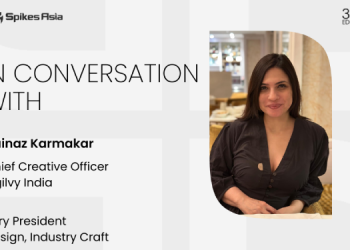Gaurav Manchanda, Founder and Director, The Organic World, says the market for organic products in India is growing faster than it is globally. Adopting a franchise model, the chain which started with one store in 2017 is gearing up to launch its 17th store in Bengaluru this year and plans to expand to Chennai and Hyderabad in the next six months. From fruits and vegetables, The Organic World now offers products across categories, catering to customers’ evolving appetite for organic products. Manchanda explains the vision of the brand and its future plans.
The concept started with a passion for organic farming and an urge to share it widely with the world. How did The Organic World (TOW) evolve in its early days?
The journey of The Organic World started when I came back to India after my studies in the US, where I had access to brands that are healthy, organic and easily accessible. When I was back to India, I was not able to find an organic brand that’s easily accessible from a retail perspective, which piqued my interest. The concept of TOW started primarily from my desire to eat healthy and also an overarching need to make this offering available to more people in Bengaluru.
We started with a pilot store in JP Nagar in Bengaluru and from there we have a presence across the city. Coming to how it has evolved, during the early days of our journey it was more about educating the consumers about what they can expect from our stores. The word organic is something which is etched in the consumer’s mind, but we also followed a process of sharing more information in terms of what is organic, the need for it, the benefits of organic lifestyle, what is organic farming etc. We used to conduct workshops at our stores where different sessions and discussions on organic and related topics were held. Today, it is not about sharing what is organic and its benefits, because people and consumers are largely well informed and they make lifestyle choices and decisions themselves. Where we have evolved is in terms of what we are conveying to the consumers, primarily presenting to them how much compromised consumption is normalised now, whether it is in daily eating or lifestyle habits. Over a longer time period these are not sustainable methods. For example, certain ingredients like food colours, chemicals that we consume in food, products used on skin etc. That’s where we started talking a bit loudly. Apart from disseminating information, we started presenting our stores in a certain way to bring that to consumers’ notice.
We have evolved in terms of how we communicate to the consumers and how informed the consumers are at this stage – there are a lot more consumers who know particularly about what they consume.
You started with organic fruits and vegetables and soon moved to organic living, says the website. Now you have ‘Eat Better’, ‘Live Better’, ‘Look Better’ and a ‘kids’ offering under ‘Nurture Better’. How did each vertical evolve and how much does each contribute? Which is the fastest growing?
As you mentioned we started off with fruits and vegetables as we were working closely with farms and farmers. Typically for consumers, fruits and vegetables end up being the initial step of eating organic foods. It is a gateway to live the organic lifestyle. From there they take the step to dairy and baking products and from there to staples. It is a step by step process. From there people evolve their consumption towards what shampoos, creams and soaps they use. People evolve from ‘Eat Better’ to ‘Live Better/Feel Better’. We have seen that consistent pattern since we started and that hasn’t changed. If you look at the percentage of the basket, it is still 45 to 50 pc fruits and vegetables, then moves into the 10 to 15 pc of dairy, bakery products, staples. Rest are the products from ‘Feel Better’ category followed by ‘Live Better’, the home care products (natural cleaning products).
You launched TOW’s first store in 2017 in JP Nagar Bangalore. The site says, “At the start of 2021 we had 10 stores across Bengaluru” with stated plans to expand in your home city and across India. How has that panned out? What are the retail expansion targets?
During the pandemic period we held back our decision to open more stores as it was challenging to look out for properties and set up stores. We were busy serving as the demand was pretty strong during that period especially for fruits, vegetables and other daily consumption products. We were focused on serving existing customers. From 2022 to the end of 2023, we are now at 16 stores and the 17th store will be launched in ITPL, Bengaluru later this year. We continue to build our presence a little faster than before because we started our franchise program as well. As part of the model, we allow people to own and operate the stores.
All these stores are in Bengaluru. The reason is that we believe that Bengaluru as a market has a much larger need for the products TOW offers. We believe that the market can easily host another 10 stores in various localities – it can go up to 25 stores. It is also because our supply chain is all based here. A large portion of our partner farms are based in and around Bengaluru.
Over the next six months we are planning to expand to Chennai and Hyderabad as we consider these two cities as our next big markets. Again, the consumers in these cities are conscious about their needs. The number of stores in these cities are up for planning.
How is the company funded? Do you plan to raise funds to expand?
Right now, it is all bootstrapped and funded internally. It’s all family held. Since we are at 16 stores, we intend to bootstrap it and build from where we are. Our next growth is through the franchise model, where our franchisee/entrepreneur partners also put in their own investments to set up stores. They will have a source of income through the stores, which keeps them sustainable and they can build on that. We have seen certain franchisees breaking even within three to four months, at least operationally. Hence, we believe there is a lot of space for the franchise model to grow. We are going to expand to 100 stores slowly and post that we will start looking out for external private funding.
TOW has introduced the ‘Not in our aisle list’ concept in the country. Can you elaborate on it?
I believe we have taken quite a bold step in introducing something which I think is an industry-first or India-first concept called ‘Not in our aisle list’. I am not sure if any other player has done this. We have banned 25 chemicals that we believe are not good for sustained consumption and they have been taken out of our shelves. That includes, parabens, Tert-Butylhydroquinone (TBHQ) which is used in cookies and microwavable popcorn. We don’t allow artificial flavours and colours; the intent is to have wholesome and green food. We have gone through a selection process. We only allow brands that don’t have these 25 products as their ingredients on our shelves. There is a vetting process we follow. The objective is to improve the health quotient or clean food quotient on our shelves, so that the consumers needn’t be worried about the ingredients of food they consume – we have already done that work for them.
During the pandemic period, people were focused on healthier food like never before. What was the growth percentage achieved during the period? Were you able to sustain the growth post the pandemic?
Since the early days of TOW, we have had a consistent growth pattern. The global market for organic food and consumption is growing at roughly 12 to 13 pc per year, while the Indian market is growing at 23 to 24 pc per year. We have seen that with the brand as well. Our stores are growing at a rate of 20 to 25 pc per year. During Covid period it was 25 to 30 pc. India is a bright spot in the organic equation per se. The intent is to be part of that journey and hopefully to be the early ones or pioneers in the journey.
You have launched an app for The Organic World. What are the download and active user numbers? How is this growing?
For The Organic World, 85 pc of revenue comes from offline and 15 pc from online. Online sales are growing organically. Our focus is still on offline and it is the primary way of customer acquisition for us. We haven’t put money online for customer acquisition because we believe customer acquisition cost offline is much more sustainable.
We launched the app two and half years ago. It’s been slow and steady and primarily organic. We have around 50,000 users at this point.
Are the app numbers an indicator of loyalty? How else do you measure loyalty?
From a loyalty perspective, we are actually ahead of industry standards. One of the indicators is not just the loyalty numbers but also the average basket size that people shop and frequency. Our average basket size is at Rs.950 which is quite healthy when it comes to grocery and food retail.
Can you throw some light on the brand’s marketing and ad spends? How much is earmarked for new customer acquisitions?
Our customer acquisition cost is somewhere around Rs.1,500 to 1,600, across all channels. Overall marketing spend is about 4 to 5 pc of our overall revenue.
Is there a concern among consumers about the authenticity of (claimed) organic products?
As players come into the market, they are trying to do their part along the journey of what it means to present clean and healthy food to the consumers. In the case of TOW, we intend to focus on the areas of authenticity, accessibility and affordability. We can provide the information that the consumers are looking for. Consumers also should look for some indicators, whether it is organic certification, right seals etc. They should be aware of where the food is coming from.
How much control do you have over the sourcing and production, especially with such a wide range of products?
We are a multiple brand outlet. Our association with packaged goods is very straightforward. We check and confirm on the chemicals and if there is presence of those 25 chemicals, as I mentioned earlier, then we won’t be associating with them. When it comes to loose goods, we typically work with the sourcing farm or network to get the items tested and make sure it meets the standards. We also work with a lot of farms which fall under the Happy Harvest Farms network. We ask for the certifications and records around that. In some cases, people will not be aware of how to get the certifications. In that case we help them through the process.
Feedback: [email protected]

















